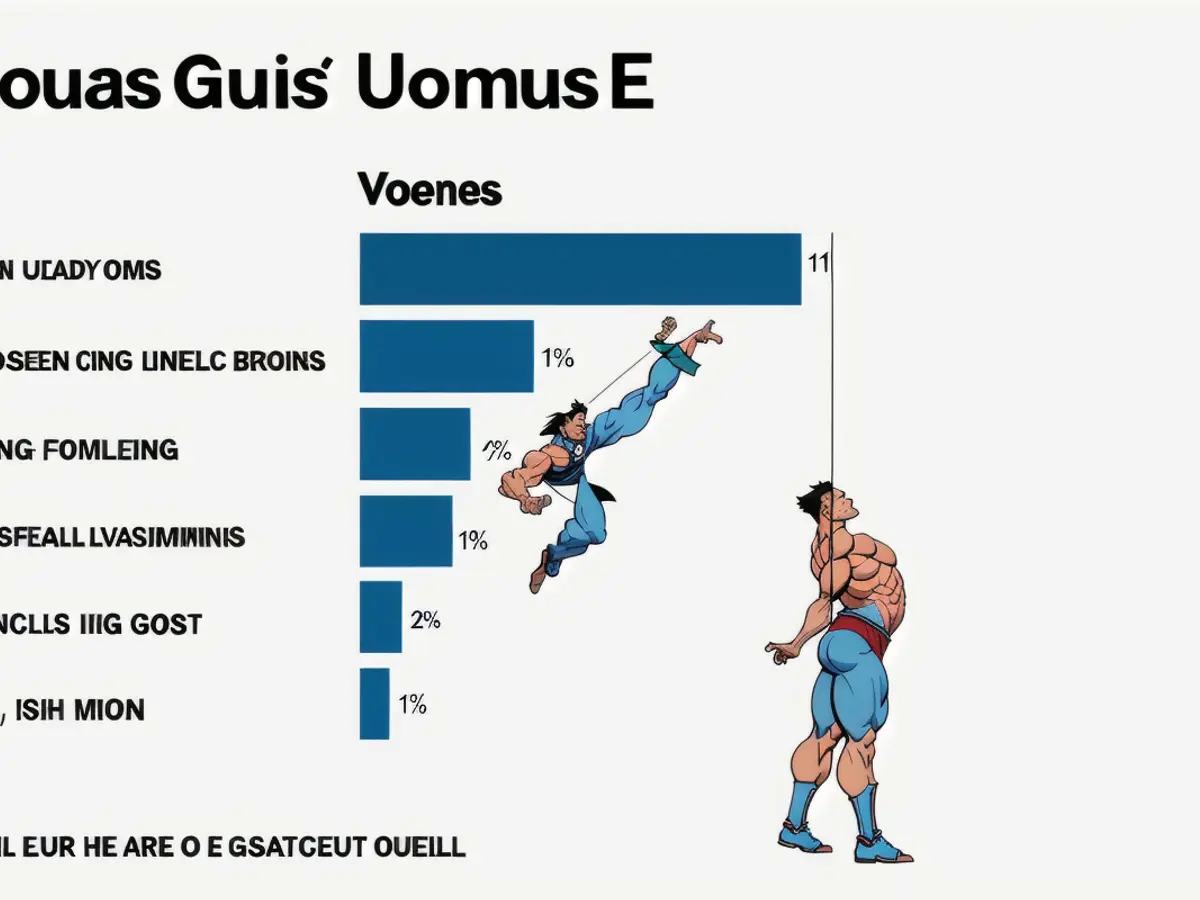Record-breaking Gold Prices reach $3,000: Factors fueling the surge
Gold Prices Soaring: A Breakdown
Gold prices have skyrocketed, surpassing the $3,000 per ounce mark in 2025. This meteoric rise can be attributed to a myriad of factors, chief among them geopolitical turmoil and economic instability.
The Gold Rush: Causes and Effects
The gold market has witnessed a seismic shift with increased demand from central banks. According to the World Gold Council, central banks purchased a staggering 1,000 metric tons of gold in 2024, marking three consecutive years of significant buying – nearly double the average annual purchase amount for the past decade [1][3]. Notable buyers in 2025 include Uzbekistan, China, Kazakhstan, Poland, and India.

This central bank gold rush was sparked by the seizure of Russia's central bank assets following the 2022 invasion of Ukraine. The freezing of $300 billion in Russian central bank fiat currency assets exposed the risks of holding reserves in foreign currencies or overseas institutions. Although Russian central bank gold assets were not seized because they were held within the country, this event set off a global trend towards diversification [1][5].
With gold emerging as a preferred asset due to its resilience against political and economic sanctions, central banks have turned to gold as a means to minimize the risk of asset seizure, hedge against inflation, and reduce reliance on dollar-heavy reserves [1][2]. Given the Trump administration's less-than-friendly approach to international relations, the trend of central bank "de-dollarization" via increased gold allocations appears set to continue.
More Than Just Central Bank Whimsy

Geopolitical and economic tensions are not only driving central banks' gold appetite but also sparking investment interest. Rising global debt levels, renewed fears of recession, escalating tariffs, and a global easing of monetary policy have pushed investors toward gold as a haven in uncertain times [1].
This trend is evident in the accelerated inflows into gold ETFs. The World Gold Council reports that physically backed gold ETFs took in a record $9.4 billion in February 2025, marking the largest monthly inflow since March 2022. The largest U.S. gold ETF, iShares GLD, now boasts $86.6 billion in assets, up from $73.2 billion at the end of 2024 [1][5].
Institutional investors are bullish on gold as well. DoubleLine CEO Jeffrey Gundlach predicts gold could reach $4,000, while Goldman Sachs has revised its gold forecast to $3,100 a troy ounce by the end of 2025 [1][4].

The gold mining sector has also experienced a surge in interest, with VanEck's GDX, the largest gold miner ETF, jumping 28.8% year-to-date [2]. This growth outpaces the S&P 500, which has lost 4% in the same period.
Prognostications and Potential Pitfalls
Continued geopolitical stress could trigger additional flows into gold over the next few quarters. However, the sustainability of this trend hinges on various factors. An improvement in the global economic outlook, a resolution in the tariff dispute, or stronger growth metrics could dim gold's appeal as a safe-haven asset [1].
Increased interest rates, higher inflation concerns, and a potential decline in jewelry demand, especially in India, could also dampen gold prices [1][3]. Despite these potential pitfalls, the current gold rally shows no signs of abating, offering opportunities for both investors and gold miners alike.
[1] World Gold Council, GoldHub - https://www.gold.org/research/gold-flows/gold-demand-trends-q4-2024[2] Reuters, DoubleLine's Gundlach sees gold reaching $4,000, March 16, 2025 - https://www.reuters.com/article/us-gold-gundlach/doublines-gundlach-sees-gold-reaching-4000-idUSKCN1RB00R[3] Financial Times, Russian central bank gold holdings untouched by sanctions, January 28, 2022 - https://www.ft.com/content/3704aac5-2d1b-452e-96d0-4209f5e58e5a[4] Goldman Sachs, Gold Center - https://www.gs.com/institutional-investor/global-markets/research/Gold-Center[5] World Gold Council, Central bank gold purchasing – divergent paths, November 7, 2021 - https://www.gold.org/insights/central-bank-gold-purchasing-divergent-paths
- Gold ETFs, such as iShares GLD, have witnessed a significant increase in assets in response to escalating geopolitical and economic tensions, with a record $9.4 billion in inflows in February 2025 alone, driven by increasing investor interest.
- The gold mining sector, represented by VanEck's GDX, the largest gold miner ETF, has also seen a surge due to the gold price record in 2025, reflecting the growing demand for gold, as miners navigate possible trade disputes and growing economic instability.
- Gold's potential impact on stocks, such as gold mining stocks, and the broader market is something that investors and analysts are observing in 2025, as heightened geopolitical tensions, combined with easing monetary policies around the world, push gold prices higher. However, potential improvements in the global economic outlook or a resolution in the tariff dispute could temper gold's appeal as a safe-haven asset.




